“Non-shedding AND hypoallergenic!” If you’re thinking about getting a Goldendoodle to be your next four-legged family member, you’ve probably heard the above statement from every Goldendoodle breeder out there. Hypoallergenic has become a bit of a buzzword in the world of dogs, with Goldendoodles (alongside all other Doodles) being put forward as the ultimate dog solution for those with pet allergies. But what exactly is hypoallergenic – what does it even mean? And, perhaps more pressingly, are Goldendoodles hypoallergenic? What about shedding – do Goldendoodles shed?
For those of you who have allergies or are sensitive to fur-bearing animals, getting the answers to these questions will ultimately help you in your decision to bring a Goldendoodle home. So let’s dive in.
Table of Contents
- What Does ‘Hypoallergenic’ Mean?
- Do Goldendoodles Shed?
- So, Are Goldendoodles Hypoallergenic or Not?
- What Are the Chances of a Goldendoodle Shedding A LOT?
- How to Know When Your Doodle Puppy is Shedding
- Is Your Goldendoodle Shedding or Just Changing Their Coat?
- What Problems Can Goldendoodle Shedding Cause?
- How To Manage Goldendoodle Shedding & Minimize Allergies Caused By Goldendoodles
- Final Thoughts
What Does ‘Hypoallergenic’ Mean?
For something to be considered hypoallergenic, it must be relatively unlikely to trigger an allergic reaction in someone. Animals that are considered “hypoallergenic” generally have longer hair that doesn’t shed. This allows the dander (dead skin particles) to stay embedded within the hair instead of being released into the air.
Did you know? It’s very rare that people are allergic to dog fur. It is the dander from the skin that causes allergies to flare up.
Do Goldendoodles Shed?
I hate to be the bearer of bad news, but there’s literally no such thing as a 100% non-shedding dog. This, unfortunately, includes Goldendoodles. (And anyone who says otherwise is just trying to sell you something 😉 )
The GOOD NEWS is that there’s typically a good chance that a Goldendoodle will shed way less than the average dog. So to answer the question of “do Goldendoodles shed” really depends on how each Goldendoodle was bred, i.e. what its generation is.
So, Are Goldendoodles Hypoallergenic or Not?
Goldendoodles are not hypoallergenic, as no dogs are. Here’s why:
What Triggers An Allergy To Dogs (Even Goldendoodles)?
While most people associate pet allergies with shedding – and this makes a lot of sense, as you’ll see in a bit – those who are sensitive to dogs in this way are not actually reacting to the hair itself. Instead, their body is unhappy about specific proteins found in the animal’s skin cells, saliva, or urine. These all can be carried around by their hair, which is why those with allergies might find themselves flaring up more around heavy-shedding dogs. However, it’s important to note that even if a dog is entirely hairless, it will still produce these proteins (i.e., the allergens). They will just be less far-reaching.
Yet, there is a little wordplay involved here because, according to the experts, for something to be considered hypoallergenic, it must be relatively unlikely to trigger an allergic reaction in someone. This means that some dogs can be regarded as “hypoallergenic,” but essentially, they are just more hypoallergenic than others. Breeds – such as Poodles – that have longer, single-layered hair, which is less likely to shed as frequently as those with shorter, fur-like double-layered coats, are less likely to trigger an allergy response because they keep those crazy proteins to themselves, so to speak.
So What Are The Chances You’ll Be Allergic To Goldendoodles?
As hybrid dogs, the question of the Goldendoodle’s level of hypoallergenic-ness is a tricky one. Similarly to the question of whether Goldendoodles shed or not, how likely an individual Goldendoodle is to trigger an allergic reaction really depends on a few things. It depends on its generation, how its genes are expressed, and how much it sheds.
I know that’s not the definitive answer you want to hear, but don’t lose hope just yet!
As mentioned previously, Poodles are considered hypoallergenic. And even though Golden Retrievers are not hypoallergenic in the slightest, there is a fair chance a Goldendoodle can be, just so long as the breeder is doing everything right.
Theoretically, the more “Poodle” a Goldendoodle has in its blood, the less likely they are to trigger allergies. So, to enhance the chances of a Goldendoodle litter inheriting the Poodle’s more hypoallergenic hair, the breeder backcrosses a Goldendoodle with a Poodle. This means more Poodle genes and a greater chance of a low-shed coat. Depending on their specific generation, these dogs are labeled F1B, F1BB, F2B, or F2BB.
So, if you’re worried about a new Goldendoodle puppy triggering your allergies, these are the types to go for. Just be aware that while you are less likely to suffer a reaction, there is still a chance. But let’s go even more in-depth with this…
What Are the Chances of a Goldendoodle Shedding A LOT?
To understand the chances of a Goldendoodle shedding any amount, you have to know a little about genetics. If you don’t, no worries – it’s pretty easy to understand. Let us explain.
F1 Goldendoodles
Let’s say you have a first generation (F1) Goldendoodle, whose parents are a purebred Golden Retriever and a purebred Standard Poodle. Now, Golden Retrievers are typically heavy shedders and Poodles are typically non- shedding. As such, genetically (and mathematically) speaking, their offspring pups will have some chance of shedding. And by some, we mean less than a Golden Retriever, but more than a Poodle.
Here’s a basic genetics chart – technically called a Punnett square – showing the genotype (genetic makeup) for F1 Goldendoodle shedding.
| F1 Goldendoodle | Parent: Poodle – light shedding (pp) |
| Parent: Golden Retriever – heavy shedding (GG) | ppGG |
What Are the Chances?
In the table above, “ppGG” indicates that the F1 Goldendoodle will have a 50% chance of heavy shedding and a 50% chance of light/non-shedding. However, we all know that genetics are never black and white.
Think of yourself and your siblings as an example. Your mom may have blonde hair, and your dad may have dark brown hair. Yet, you may have light brown hair, while your sister got mom’s blonde hair and your brother got dad’s dark brown hair.
Most likely, the F1 Goldendoodle will fall somewhere in between heavy and non-shedding.
In my own experience with Chloe (my F1 Doodle), I seemed to luck out, as she hardly sheds at all. The only time I notice her hair is when there’s a small clump of it in the corner of the room after a few weeks of not vacuuming. That’s actually pretty comparable to the normal amount of hair that humans shed!
However, I should note that a good amount of hair comes out when I brush her every few days.
-Whitney, Doodle Doods founder
F1b Goldendoodles
Now, if you have a first generation backcross, or F1b Goldendoodle, the genotype will be a little different. An F1b Goldendoodle whose parents are an F1 Goldendoodle and a purebred Poodle will, in theory, be 25% Golden Retriever and 75% Poodle. As such, there’s a much higher chance that the F1b pup will be a very light shedder. This is because the pup contains more genes from the Poodle side, and standard poodles are inherently light/non-shedding.
Here’s another Punnett square showing the genotype for F1b Goldendoodle shedding.
| F1B Goldendoodle | Parent: Poodle – light shedding (pp) |
| Parent: F1 Goldendoodle – heavy shedding (GG) | ppGG |
| Parent: F1 Goldendoodle – medium shedding (Gg) (most likely) | ppGg |
| Parent: F1 Goldendoodle – light shedding (gg) | ppgg |
Unlike the table for F1 Goldendoodles, this one has three variables from the “Parent: F1 Goldendoodle” side:
- One for heavy shedding
- One for light shedding
- And one for somewhere-in-between shedding
What Are the Chances?
Indicated by “ppGG”, if a heavy-shedding F1 Goldendoodle is bred with a light/non-shedding Poodle, in theory, the offspring (F1b Goldendoodle) will have a 50% chance of heavy shedding and a 50% chance of light/non-shedding.
Indicated by “ppgg”, if a light shedding F1 Goldendoodle is bred with a light/non-shedding Poodle, in theory, the offspring (F1b Goldendoodle) will have a 100% chance of light shedding.
Indicated by “ppGg”, if a somewhere-in-between shedding F1 Goldendoodle is bred with a light/non-shedding Poodle, in theory, the offspring (F1b Goldendoodle) will have between a 50% and a 100% chance of light/non-shedding. This is the most likely scenario.
Again, though, genetics are never black and white – so take these percentages with a grain of salt.
If you want to know more about the average amount of shedding between Goldendoodle generations, see how hundreds of Goldendoodle owners rated their dog for amount of shedding, hypoallergenic-ness, and ease of grooming.
The uncertainty surrounding how much or how little any individual Goldendoodle will shed…is simply a reality with mixed-breed dogs. They can take on the characteristics of either parent to any degree, and no one – not even the most seasoned of breeders – can control how they physically turn out.
So if you’re here because you want to bring a Goldendoodle into your life, but don’t want to risk getting a heavy shedder, I would suggest looking for an F1b Goldendoodle whose parents are an F1 Goldendoodle and a Poodle. Keep in mind, though, that an F1b Goldendoodle will look more like a Poodle and less like a Golden Retriever.
F1b Doodles are notorious for requiring A LOT of maintenance grooming and coat care – just as an FYI.
How to Know When Your Doodle Puppy is Shedding
All puppies are born with a single-layer puppy coat, which they generally shed around 5 to 10 months of age. Although, some dogs may take as long as a year to lose their first coat entirely. Even with Doodles, this is completely normal and doesn’t mean that your pup will be a year-round shedder.
How and when the shedding occurs differs from dog to dog. However, you will likely notice the base of your pet’s coat becoming a little coarser around this time. This will tell you that the shedding will happen soon.
You won’t know exactly what type of coat your Doodle has inherited until their adult hair is fully grown in. This may not happen until your pup is two years old. Any adult coat will be thicker, stiffer, and longer than the puppy one.
Is Your Goldendoodle Shedding or Just Changing Their Coat?
You may also start to notice a little more hair about the place in the spring and again in the fall. This is known as seasonal shedding and happens even with low-shedding breeds. Your pup is essentially changing coats from a winter to summer one and back again to help them cope better with changing temperatures.
Seasonal shedding is normal for all breeds, it occurs because of hormonal shifts triggered by changing daylight hours. There really is nothing you can do about it but increase their brushing routine in the hopes of catching all that loose hair before it spreads about the house.
The Stages of Goldendoodle Shedding
Like all dogs, Goldendoodles go through four cycles of hair growth. These are anagen, catagen, telogen, and exogen.
- Anagen is known as the active hair growth stage. This is where the hair keeps growing until it reaches its genetically predetermined length.
- Catagen is a transitional phase when the hair stops growing and an outer sheath attaches to the hair strand.
- Telogen is the resting phase.
- Exogen is when the hair falls out to make room for another strand. This is the shedding phase.
The duration of each of these depends on a number of factors such as the dog’s breed, their nutrition, the climate, the number of daylight hours (see seasonal shedding above), and whether they are stressed or unwell.
Low shedding dogs like Poodles (and many Goldendoodles) have an anagen dominated cycle. This basically means that their hair follicles are in the growth stage for much longer periods than other breeds. They have almost continuously growing hair, which explains why they so often need trimming and tend to shed less than other breeds.
What Problems Can Goldendoodle Shedding Cause?
Aside from pesky hairs all over your furniture and clothes, the biggest issue caused by Goldendoodle shedding is that it can trigger allergies.
Allergies are not caused by the hairs themselves but by a protein often found in dog secretions such as their saliva and oils found in the skin. Dogs that shed a lot distribute dander containing this allergen all over the house, causing much more of a reaction in allergy sufferers.
With low-shed dogs, the dander is often caught and held in by their tight curls and only released when they are brushed through. This is why breeds such as the Goldendoodle are better for those who suffer from pet allergies, even though they are not truly hypoallergenic.
How To Manage Goldendoodle Shedding & Minimize Allergies Caused By Goldendoodles
Desperately want to bring a Goldendoodle home, but worried about your allergies? In any case, Goldendoodle shedding is definitely manageable.
Besides choosing the best generation for your situation (F1b), our best advice…
Grooming. Period.
If you find your nose a little too runny or clothes a little too hairy, it’s a great idea to start practicing good grooming on your Goldendoodle. You should settle for nothing less than daily brushing.
Grooming Tips for Reducing Allergies
If the question “are Goldendoodles hypoallergenic?” is burning a hole through your brain, you’ll be happy to know that you can minimize allergens by grooming them frequently.
Here are a couple of Goldendoodle grooming tips to help with allergies:
Bathe Them Often…
Frequently bathing your Doodle will significantly reduce the allergens caused by dander. Combine baths with a great shed control shampoo and you’ll be a happy breather.
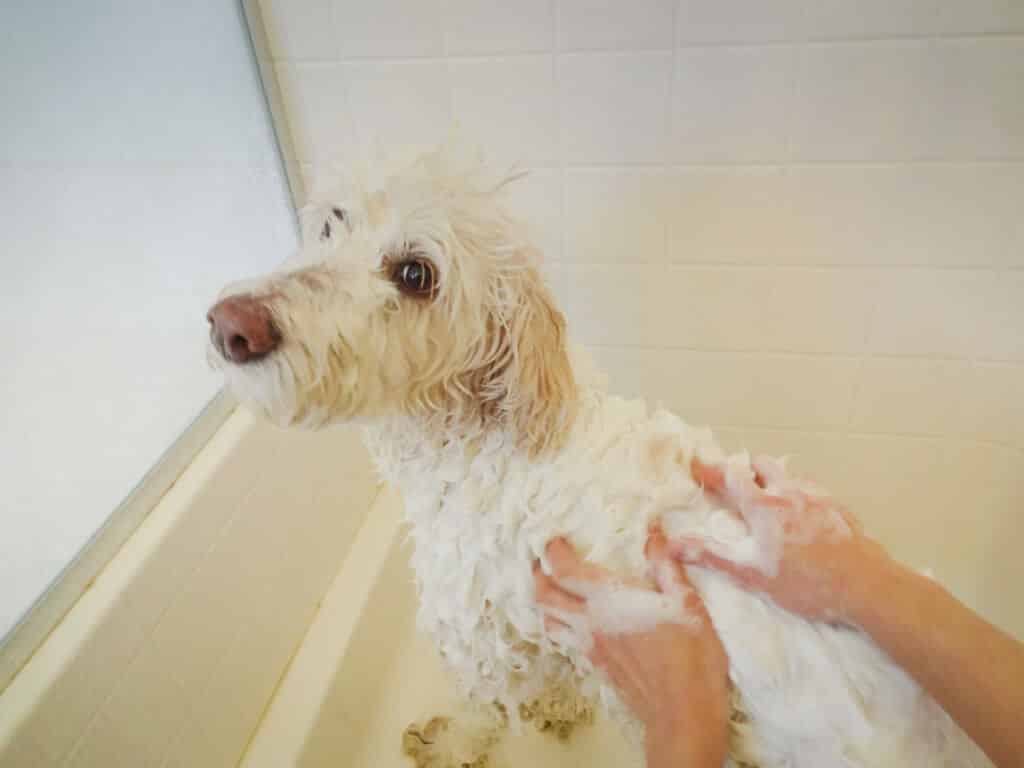
…But Brush Them More
Grooming – more specifically, brushing – is going to be absolutely key in controlling and minimizing your allergies. Brushing helps extract dirt, loose hairs, and dander from the hair. It also helps to distribute his skin’s natural oils.
I used to recommend brushing Goldendoodles once or twice a week, but there’s an even bigger, more important reason why Goldendoodles REQUIRE DAILY BRUSHING: matted dog hair can lead to skin infections that produce even more dander. And you know who’s really prone to hair mats? Goldendoodles.
So… more brushing = less matting = less dander = less allergies!
There are a number of different brushes for Goldendoodles on the market, and slicker brushes like the Big G will remove loose hairs from the undercoat and reduce shedding and risk of allergens by up to 90%.
Time for a Haircut!
It is said that Goldendoodle hair never stops growing, so there will undoubtedly be some allergens lurking around no matter how often you bathe or brush him.
Because of their fast-growing, lengthy hair, Goldendoodle haircuts ought to happen frequently. You might even consider investing in your own grooming tools to save money on grooming. See this page for haircut style inspiration.
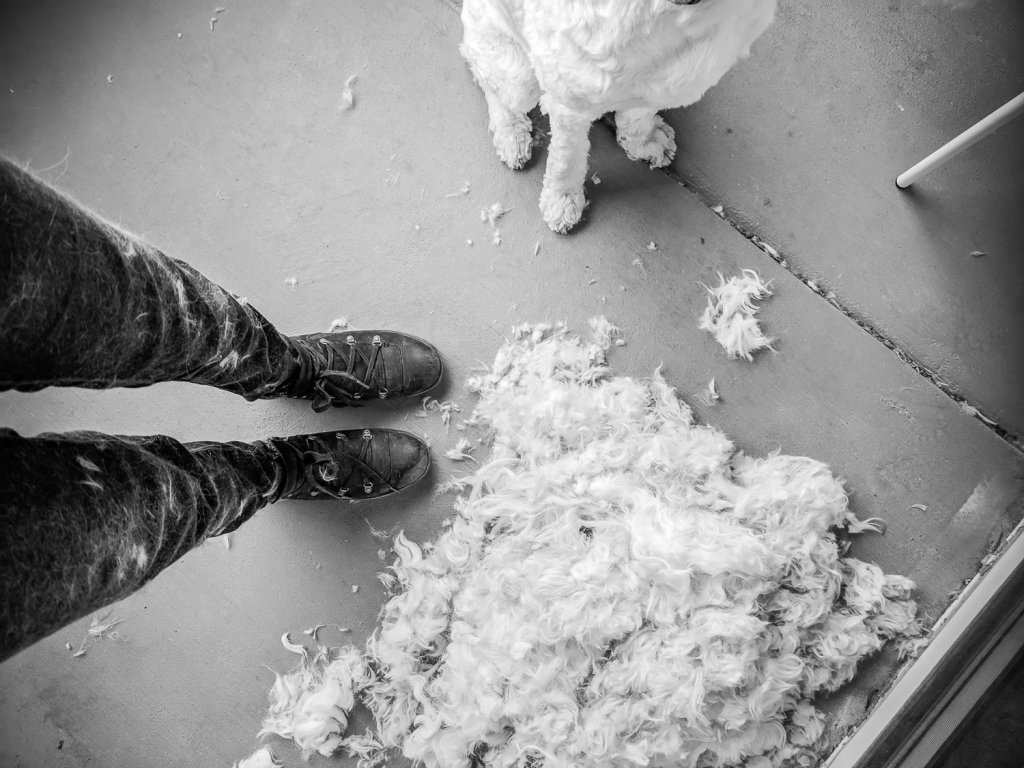
Final Thoughts
So there you have it; as Goldendoodles aren’t, strictly speaking, hypoallergenic, owning one could be a risky business for someone who suffers from pet allergies. That being said, there is a way to hedge your bets by picking out a pup that has more than the standard amount of Poodle genes as per a knowledgeable breeder. On top of that, taking good care of your dog’s coat through bathing, brushing, and trimming will help prevent the distribution of the painful allergen protein around your house, rendering the symptoms of your allergy manageable and allowing you to spend time with your beloved Goldendoodle.
Learn How to Stop Shavedowns For Good & Keep Matting At Bay!
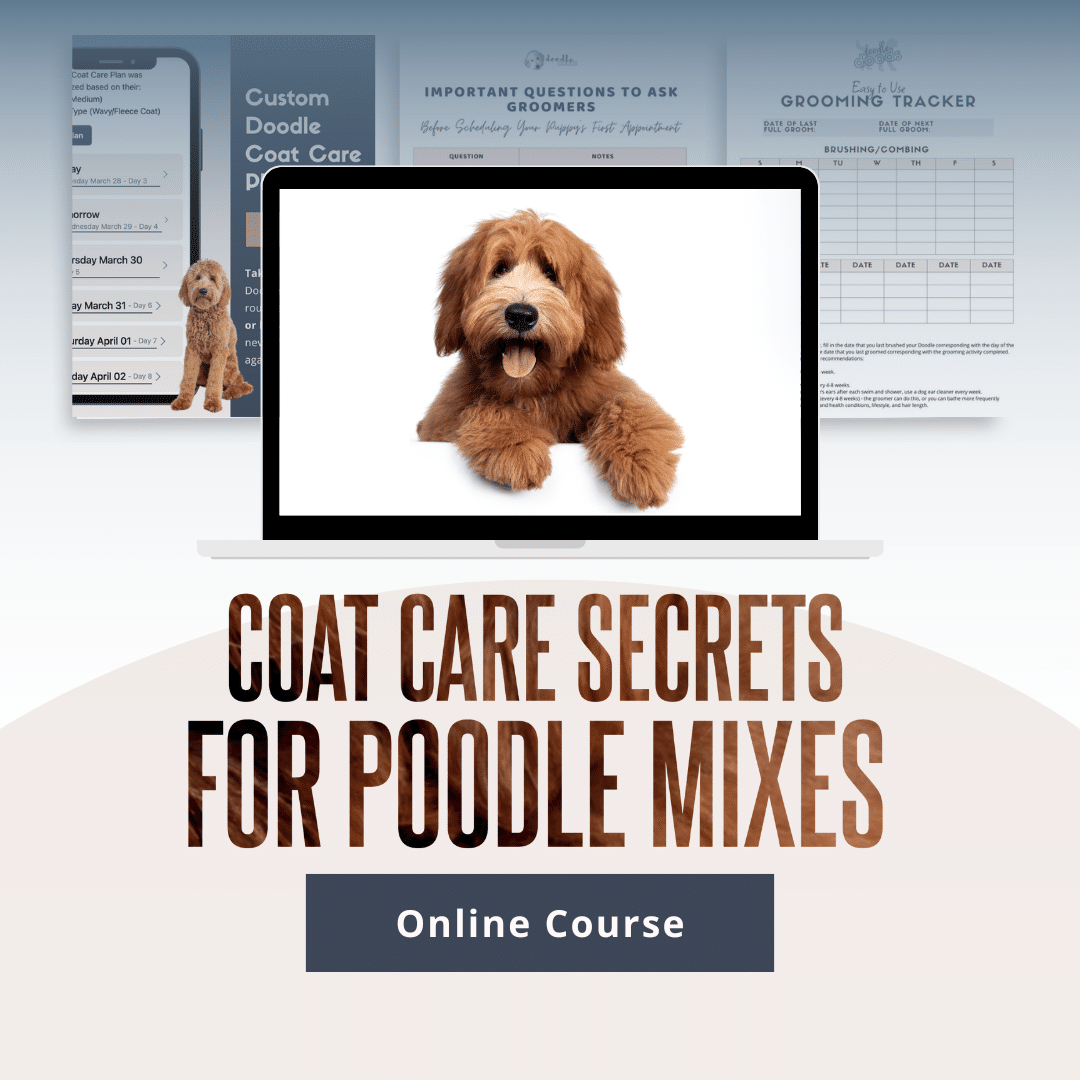
Discover the PROPER Doodle coat care routine that gets your pup to cooperate…helps you nip tangles in the bud…and gets groomers to do exactly what you want.
Plus, get $520 worth of Bonus Materials for FREE, including:- Doodle Parenthood Community and Support Group ($190 value)
- Custom Doodle Coat Care Plan Lifetime Access ($75 value)
- Easy to Use Doodle Grooming Tracker ($20 value)
- And MORE!
What other tips do you have for reducing allergies caused by Goldendoodles? Let us know in the comments below!
The information on this page is for informational purposes only. It is not intended to be a substitute for professional groomer advice. Always seek the advice of your groomer, veterinarian, or other qualified animal health provider with any questions you may have.

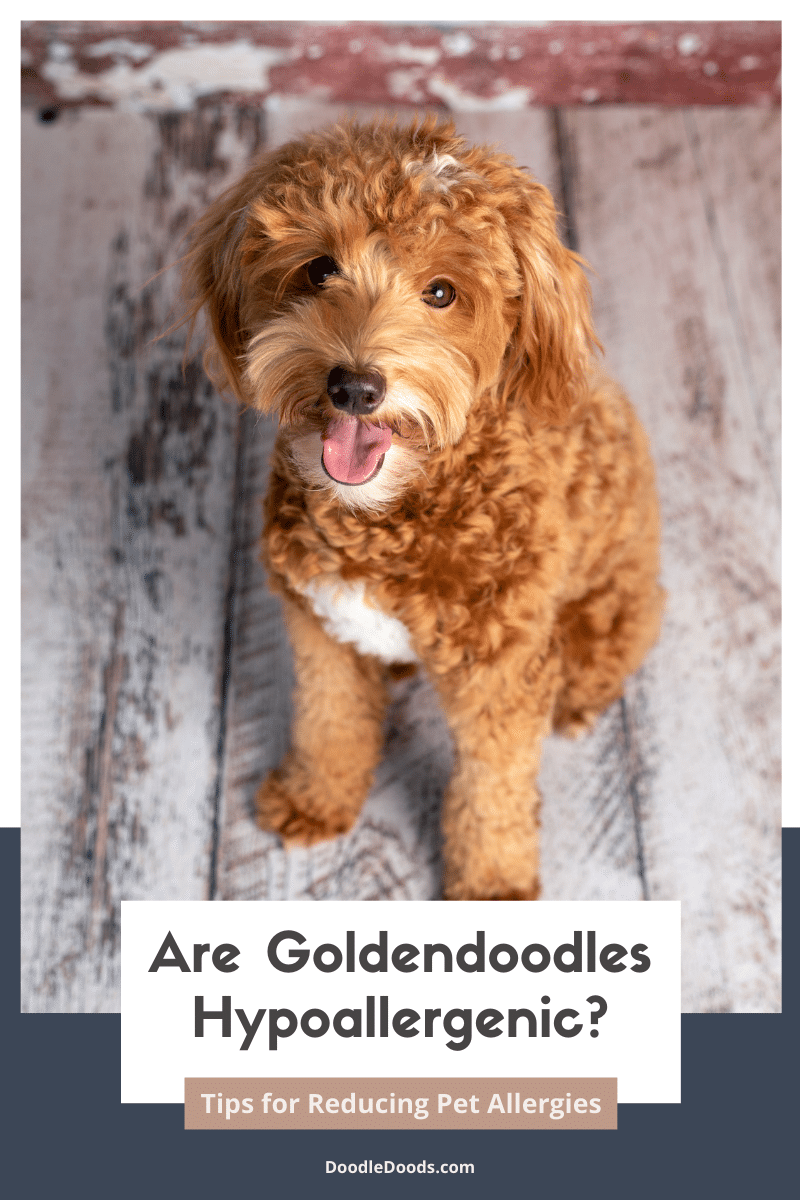

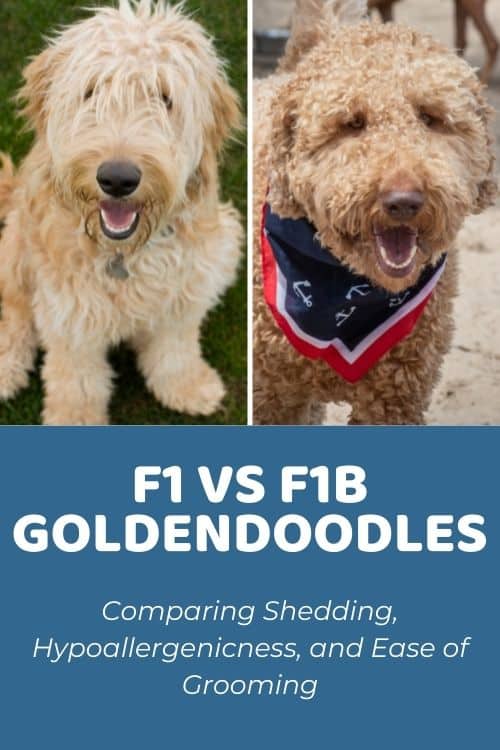
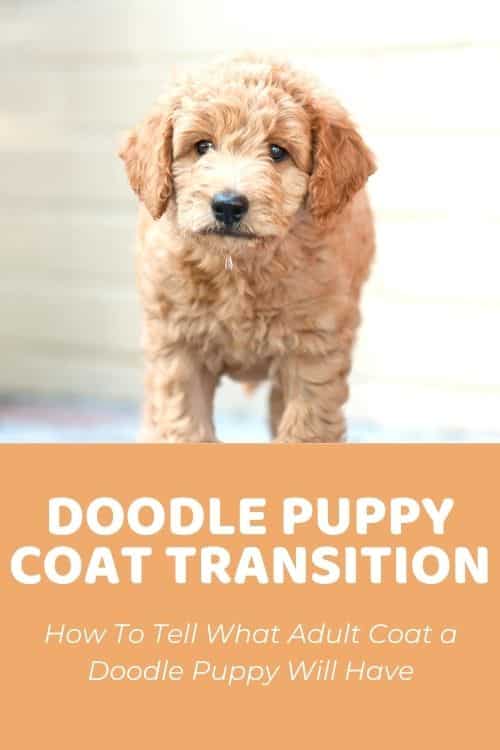
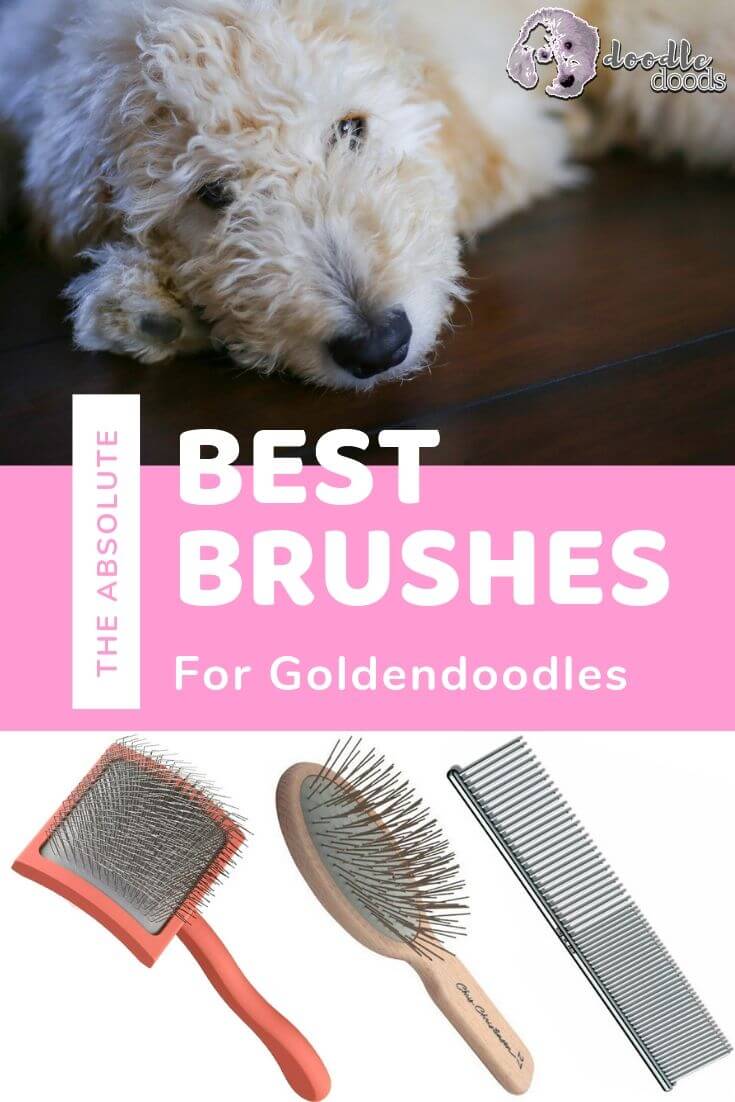



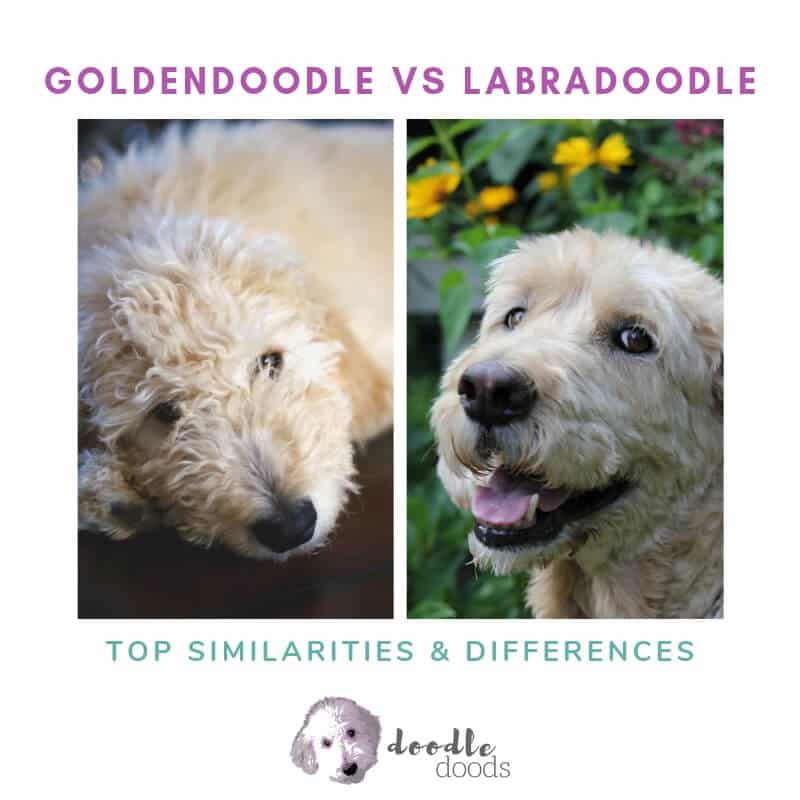
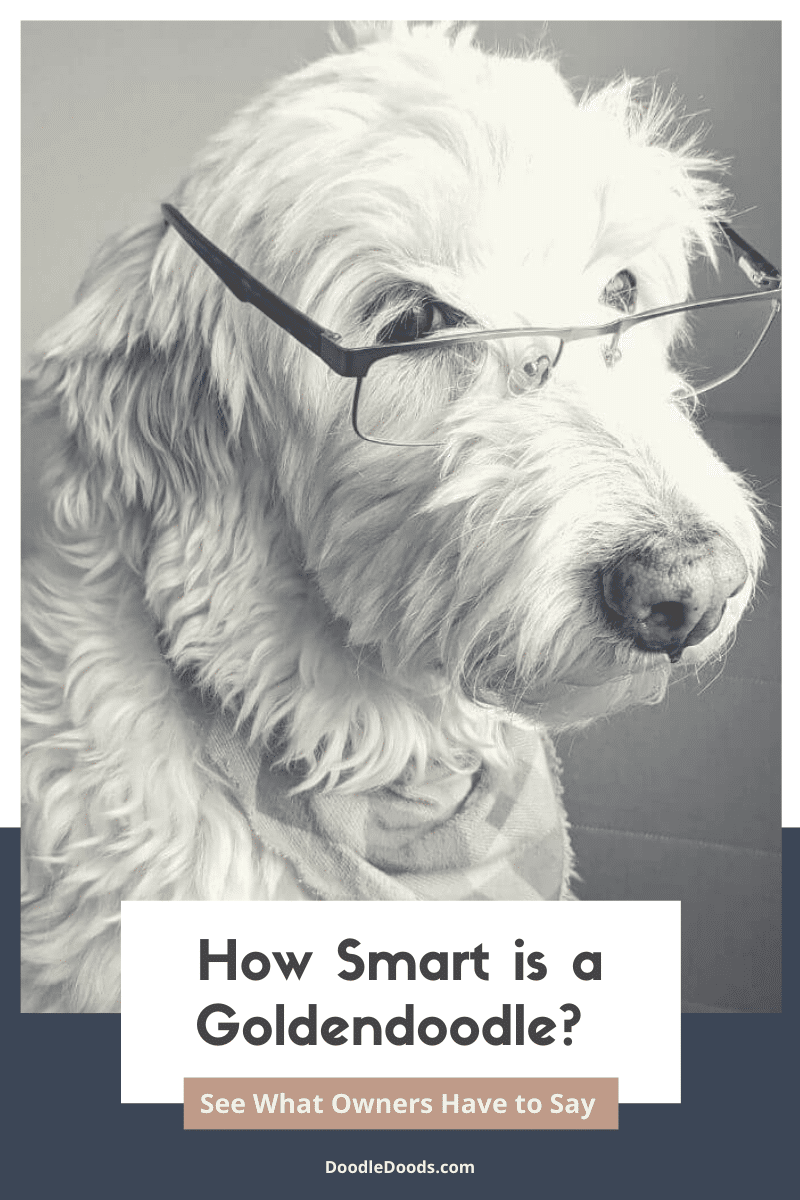

We are contemplating on getting a goldendoodle puppy but one of our grandchildren has bad allergies. Is this the right kind of puppy to adopt. The mother is golden retriever and the father is standard poodle.
January 24, 2017 at 11:24 amHi Joan, lots of people love goldendoodles because they don’t typically shed much at all, but when people are allergic they are reacting to dander collecting in the dog’s hair. All dogs produce dander. However, I can tell you that whenever I have brought my own goldendoodle around family members with pet allergies, they did not have a reaction. I would say that if you are to add a goldendoodle to your family, and are worried about your grandchild’s allergies, that you spend a little more time brushing the dog and giving him baths more frequently. Good luck!
January 24, 2017 at 1:13 pm